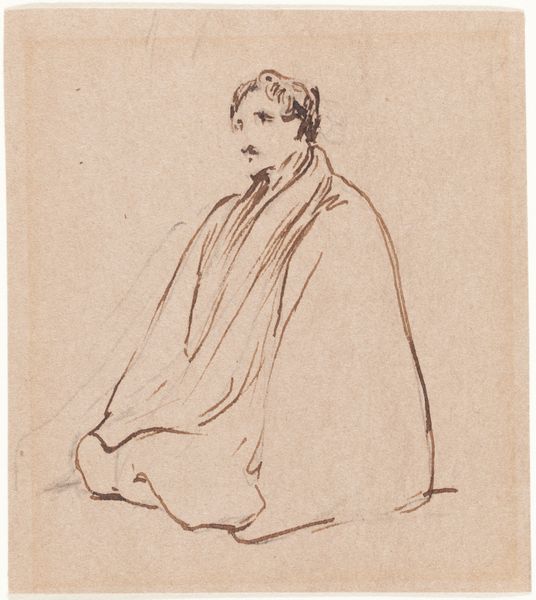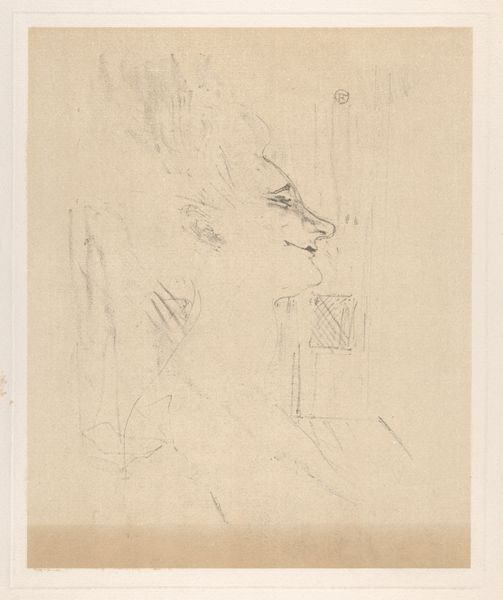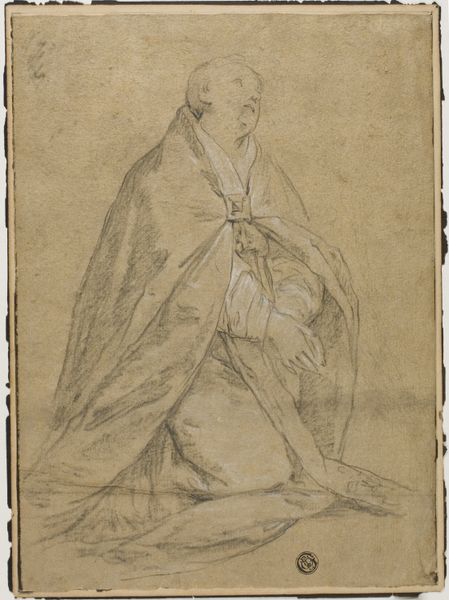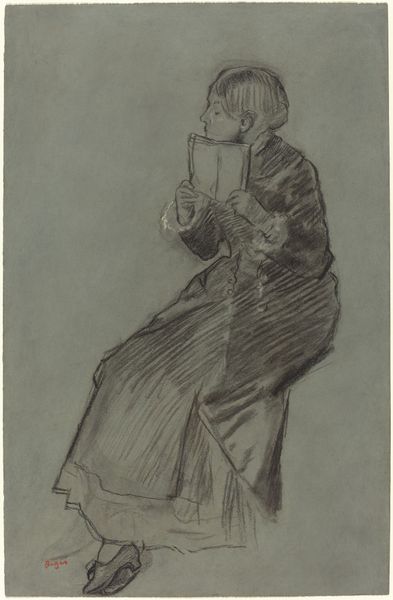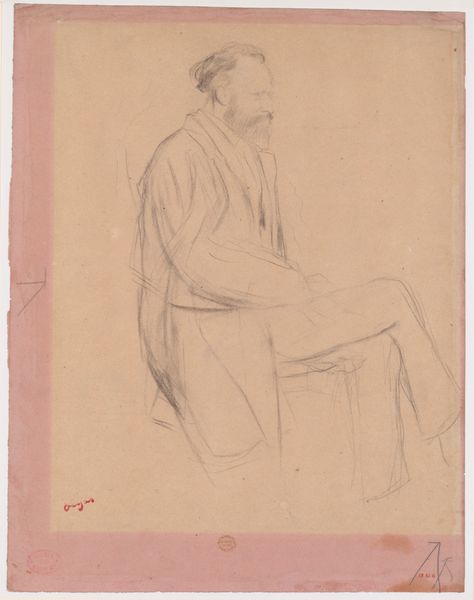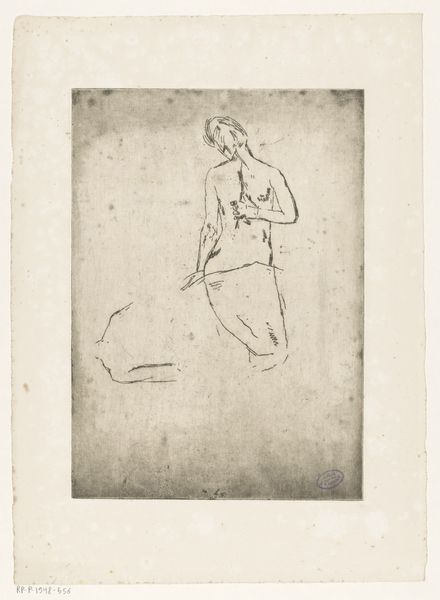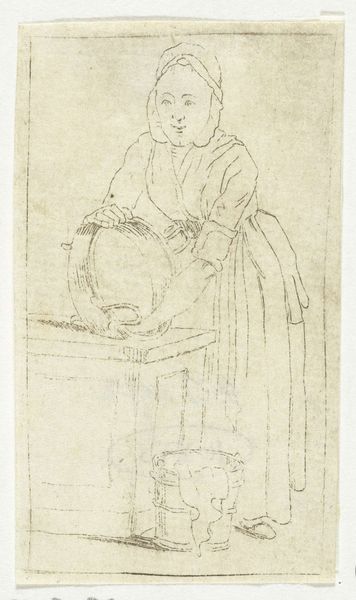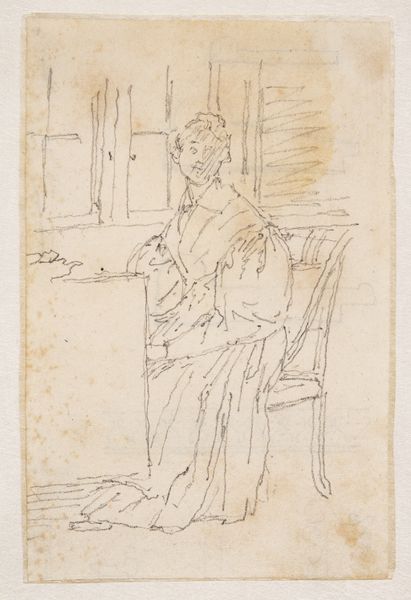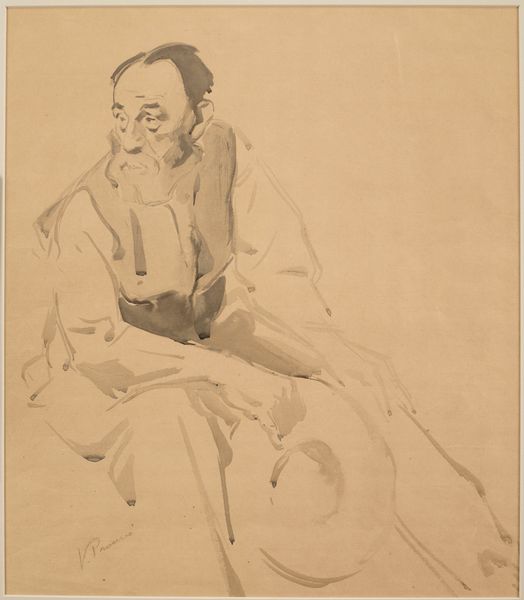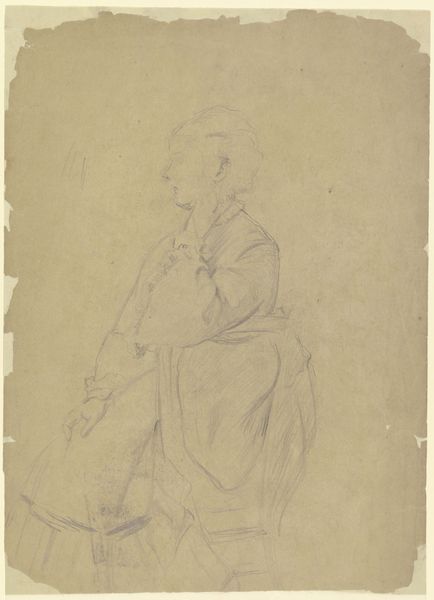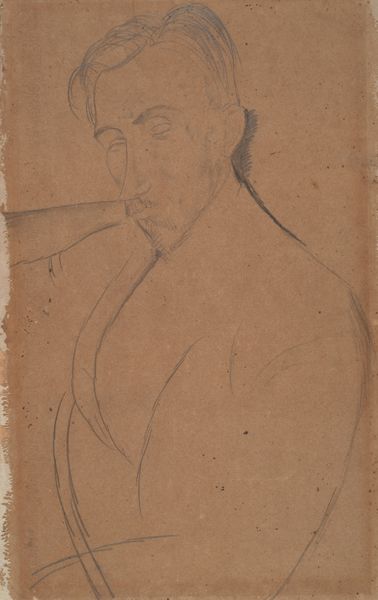
drawing, print, etching, paper, dry-media, pen
#
portrait
#
pencil drawn
#
drawing
#
self-portrait
# print
#
impressionism
#
etching
#
charcoal drawing
#
paper
#
dry-media
#
pencil drawing
#
pen
Dimensions: plate: 25.24 × 17.94 cm (9 15/16 × 7 1/16 in.) sheet: 35.5 x 21.1 cm (14 x 8 5/16 in.)
Copyright: National Gallery of Art: CC0 1.0
Editor: We're looking at Mary Cassatt's "A Portrait of the Artist's Mother," created around 1889 or 1890, a drypoint and etching on paper. There's a quiet thoughtfulness to it; it feels very intimate. What do you see in this piece? Curator: Beyond the intimate portrayal, I see a subtle defiance of societal expectations. Cassatt, as a woman artist in the late 19th century, was constantly negotiating her position in a male-dominated art world. Choosing her mother as a subject, rendered in this almost academic style but with the modernity of Impressionistic line work, quietly challenges the male gaze prevalent in portraiture at the time. Does the expression of her mother convey anything to you? Editor: Now that you mention it, I do sense a sort of stoicism, almost a quiet strength in her mother’s face. It's interesting to consider it as a counterpoint to idealized portrayals of women at the time. Curator: Exactly. This wasn't just about capturing a likeness; it was about reclaiming female representation. Consider the artistic and political context. Women were fighting for suffrage and recognition, so I want you to think about it this way: in what ways does a seemingly domestic portrait take part in this dialogue? Editor: I guess the very act of Cassatt, as a woman, portraying her mother with such seriousness elevates a domestic relationship to something worthy of artistic exploration. It reclaims visibility. Curator: Precisely! It reframes domesticity and maternal bonds as powerful subjects. It also allowed both Cassatt and her mother to exercise agency in creating this narrative. It encourages us to question the traditionally male perspective within art history. Editor: This really gives me a new way of seeing Cassatt and her work, framing her choices within the broader social struggles of the time. Curator: Absolutely! The personal is political, especially for women artists then and now. And viewing "A Portrait of the Artist’s Mother" through that lens gives it new weight and value.
Comments
No comments
Be the first to comment and join the conversation on the ultimate creative platform.

